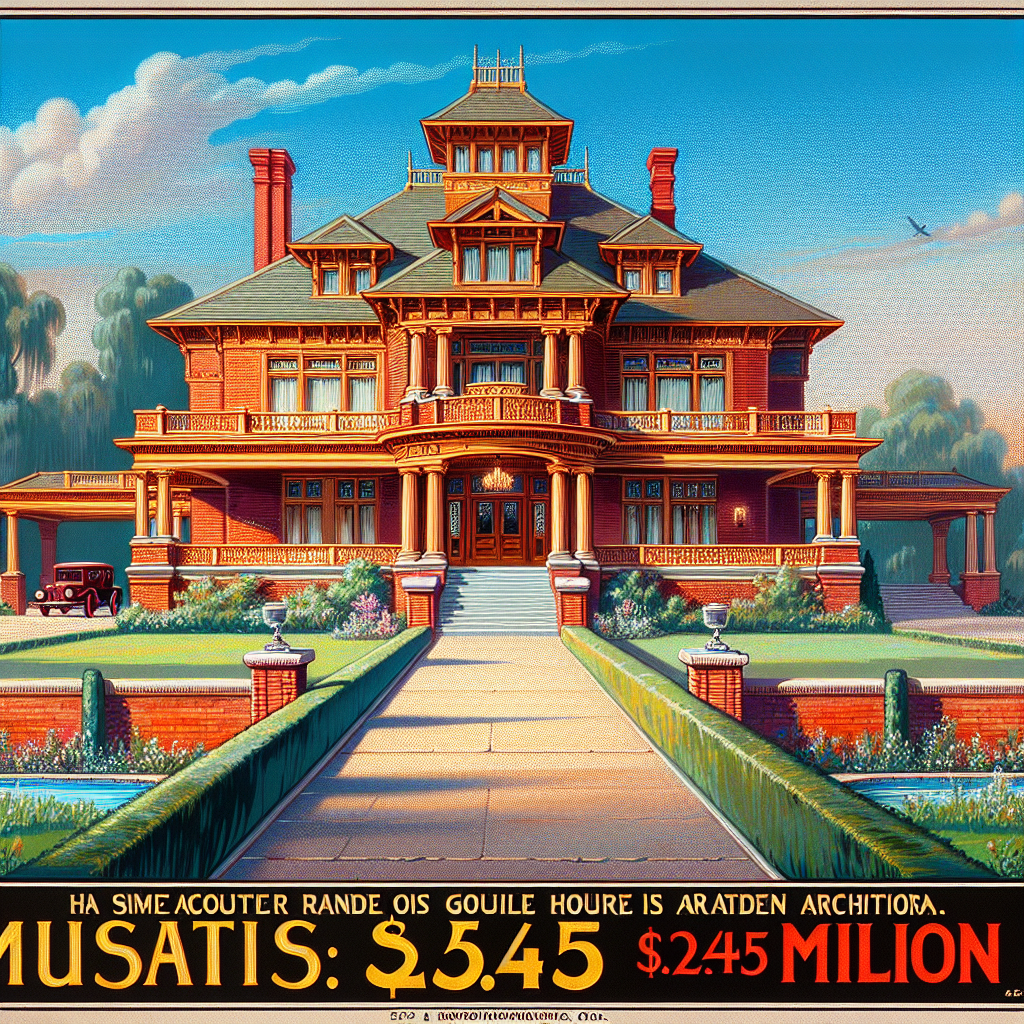The Risks and Rewards of Saving User IDs and Passwords: Finding the Balance between Convenience and Security
Are you tired of constantly forgetting your user IDs and passwords? Do you find yourself clicking on the “Forgot Password” link more often than you’d like? Well, you’re not alone. In this digital age, where we have countless online accounts, it’s becoming increasingly challenging to keep track of all our login information. But fear not, because there’s a solution: . In this article, we will explore the importance of saving and managing your login credentials, the risks associated with weak passwords, and the various tools and techniques available to help you securely store and retrieve your user IDs and passwords.
With the proliferation of online services, from social media platforms to e-commerce websites, it’s no wonder that the average person has to remember multiple user IDs and passwords. However, studies have shown that the human brain is not designed to memorize complex strings of characters, leading to the common occurrence of forgotten passwords. This not only causes frustration for users but also poses a security risk, as many people resort to using weak or easily guessable passwords to avoid the hassle of remembering them.
Key Takeaway 1: The Importance of Saving User IDs and Passwords
Remembering multiple user IDs and passwords can be a challenge in today’s digital age. Saving them securely can save time and frustration, allowing for quick and easy access to online accounts.
Key Takeaway 2: Security Measures to Protect Saved User IDs and Passwords
While saving user IDs and passwords is convenient, it is crucial to prioritize security. Using a password manager or encrypted storage solutions can help protect sensitive information from unauthorized access.
Key Takeaway 3: The Risks of Not Saving User IDs and Passwords
Not saving user IDs and passwords can lead to a range of issues, including forgotten login credentials, account lockouts, and delays in accessing important information or services. Saving them securely can help mitigate these risks.
Key Takeaway 4: Best Practices for Saving User IDs and Passwords
It is essential to follow best practices when saving user IDs and passwords. This includes using strong and unique passwords, regularly updating them, and enabling two-factor authentication whenever possible.
Key Takeaway 5: Balancing Convenience and Security
While saving user IDs and passwords provides convenience, it is crucial to find the right balance between convenience and security. Regularly reviewing and updating saved credentials, as well as being cautious about where they are stored, can help maintain a secure digital presence.
The Convenience of Saving User IDs and Passwords
The ability to save user IDs and passwords has become a common feature in today’s digital landscape. It offers convenience to users by eliminating the need to remember and manually enter login credentials every time they access a website or application. This feature has had a significant impact on the industry, revolutionizing the way users interact with online platforms.
Firstly, saving user IDs and passwords has simplified the user experience. With the increasing number of online accounts and platforms that individuals engage with on a daily basis, remembering unique login credentials for each one can be a daunting task. By allowing users to save their login information, websites and applications have made it easier for individuals to access their accounts quickly and efficiently. This convenience has led to increased user satisfaction and loyalty, as users no longer have to go through the hassle of retrieving forgotten passwords or creating new ones.
Furthermore, the convenience of saved user IDs and passwords has also had a positive impact on user engagement. With the login process streamlined, users are more likely to visit websites and applications more frequently. This increased engagement translates to higher user activity, longer session durations, and ultimately, more opportunities for businesses to generate revenue through advertising, subscriptions, or e-commerce transactions. By reducing barriers to entry, the ability to save user IDs and passwords has contributed to the growth and success of many online platforms.
The Security Concerns of Saving User IDs and Passwords
While the convenience of saving user IDs and passwords cannot be denied, it also raises concerns about the security of personal information. Storing login credentials in a device or browser poses risks, as it creates a potential vulnerability that could be exploited by malicious actors.
One of the main security concerns is the risk of unauthorized access to saved user IDs and passwords. If a device or browser is compromised, an attacker could gain access to all the saved login information, potentially leading to identity theft, financial fraud, or unauthorized access to sensitive accounts. This risk is particularly significant if users do not have adequate security measures in place, such as strong device passwords or biometric authentication.
Another security concern is the potential for password reuse. Many individuals have the habit of using the same password across multiple accounts, including those saved in their devices or browsers. If a hacker manages to obtain one set of login credentials, they could potentially gain access to multiple accounts, increasing the scope of the security breach. This highlights the importance of using unique and complex passwords for each account, as well as regularly updating them.
Lastly, the centralized storage of saved user IDs and passwords also raises concerns about data privacy. Companies that offer the option to save login credentials often collect and store this information on their servers. While reputable companies have security measures in place to protect user data, there is always a risk of data breaches or unauthorized access. Such incidents can expose users’ personal information and compromise their privacy.
Addressing the Balance Between Convenience and Security
As the industry continues to grapple with the balance between convenience and security, several measures can be implemented to mitigate the risks associated with saving user IDs and passwords.
Firstly, it is crucial for users to be educated about the risks and best practices when it comes to password security. Encouraging the use of strong, unique passwords, and promoting the adoption of password managers can help individuals protect their accounts. Password managers provide a secure way to store and generate complex passwords, reducing the reliance on saved login credentials in devices or browsers.
Secondly, companies should prioritize the implementation of robust security measures to protect user data. This includes employing encryption techniques to secure stored login information and regularly auditing their systems for vulnerabilities. Additionally, offering multi-factor authentication options, such as SMS verification codes or biometric authentication, can provide an extra layer of security for users.
Lastly, transparency and accountability are crucial in building user trust. Companies should clearly communicate their data storage and security practices to users, ensuring that they understand how their login credentials are being stored and protected. In the event of a data breach, prompt notification and remediation efforts are essential in maintaining user confidence.
Overall, the ability to save user IDs and passwords has had a significant impact on the industry, providing convenience to users while also raising security concerns. Striking the right balance between convenience and security is a continuous challenge, but with proper education, robust security measures, and transparent practices, the industry can ensure that the benefits of saving user IDs and passwords outweigh the risks.
1. The Importance of Saving User IDs and Passwords
Saving user IDs and passwords is a critical practice in today’s digital age. With the increasing number of online accounts we manage, it’s easy to forget or mix up login credentials. By saving user IDs and passwords securely, users can avoid the frustration of constantly resetting passwords or being locked out of their accounts.
Moreover, saving user IDs and passwords can enhance online security. Many people resort to using weak passwords or reusing the same password across multiple accounts, making them vulnerable to cyberattacks. By saving and managing passwords effectively, users can create strong, unique passwords for each account, reducing the risk of unauthorized access.
2. Methods for Saving User IDs and Passwords
There are several methods available for saving user IDs and passwords securely:
1. Password Managers: Password managers are software applications that securely store and organize user IDs and passwords. They often offer features like autofill, password generation, and encryption. Examples of popular password managers include LastPass, Dashlane, and 1Password.
2. Browser Autofill: Most web browsers offer an autofill feature that can save and fill in user IDs and passwords automatically. While convenient, it’s important to ensure the browser and device are adequately secured to prevent unauthorized access.
3. Secure Note Apps: Some note-taking apps, like Evernote or Apple Notes, allow users to create encrypted and password-protected notes. These can be used to save user IDs and passwords securely.
4. Physical Storage: For those who prefer offline methods, writing down user IDs and passwords in a secure physical location, such as a locked drawer or a password-protected document, can be an option. However, this method requires extra caution to prevent loss or theft.
3. Best Practices for Saving User IDs and Passwords
While saving user IDs and passwords is important, it’s equally crucial to follow best practices to ensure their security:
1. Use Strong, Unique Passwords: Create complex passwords that include a combination of upper and lowercase letters, numbers, and special characters. Avoid using easily guessable information, such as birthdays or pet names. Additionally, ensure each account has a unique password.
2. Enable Two-Factor Authentication (2FA): Two-factor authentication adds an extra layer of security by requiring users to provide a second form of verification, such as a fingerprint scan or a one-time password, in addition to their user ID and password.
3. Regularly Update and Change Passwords: Set reminders to update passwords periodically, ideally every three to six months. Changing passwords regularly helps mitigate the risk of unauthorized access due to data breaches or compromised accounts.
4. Keep Software and Devices Up to Date: Ensure that operating systems, web browsers, and password management software are up to date. Updates often include security patches that protect against the latest threats.
5. Be Cautious of Phishing Attempts: Phishing is a common method used by cybercriminals to trick users into revealing their login credentials. Be wary of suspicious emails, messages, or websites that ask for personal information.
4. Case Study: LastPass Password Manager
LastPass is a popular password manager that offers a secure solution for saving user IDs and passwords. It encrypts and stores login credentials in a vault, accessible through a master password. LastPass also provides features like password generation, autofill, and the ability to securely share passwords with trusted individuals.
With LastPass, users can save time by having their login credentials automatically filled in on websites and apps. The password generator helps create strong, unique passwords for each account, reducing the risk of password-related security breaches.
LastPass is compatible with various devices and platforms, making it convenient for users to access their passwords from anywhere. It also offers two-factor authentication for an added layer of security.
5. Risks and Mitigation Strategies
While saving user IDs and passwords can enhance security, it’s essential to be aware of potential risks and take appropriate measures to mitigate them:
1. Data Breaches: Password managers and other methods of saving credentials may become targets for hackers. To mitigate this risk, choose a reputable password manager with a strong track record of security and regularly update the software.
2. Physical Theft: If using physical storage methods, ensure the information is stored securely and is not easily accessible to others. Consider using a locked drawer, a safe, or a password-protected document.
3. Weak Master Password: When using password managers, it’s crucial to create a strong master password. Avoid using common phrases, personal information, or easily guessable patterns. Additionally, enable two-factor authentication for an added layer of security.
Saving user IDs and passwords is a fundamental practice for managing online accounts securely. Utilizing password managers, browser autofill, secure note apps, or physical storage methods can help users keep track of their login credentials effectively. By following best practices and being cautious of potential risks, individuals can enhance their online security and avoid the inconvenience of forgotten passwords or compromised accounts.
Case Study 1: A Seamless User Experience with ‘Save my User ID and Password’
In today’s digital age, users are often overwhelmed with the number of websites and online platforms they need to access on a daily basis. Remembering multiple user IDs and passwords can be a daunting task, leading to frustration and potential security risks. However, with the implementation of the ‘Save my User ID and Password’ feature, users can enjoy a seamless experience and save valuable time.
One such success story comes from a popular e-commerce platform, ShopEasy. With millions of users worldwide, ShopEasy recognized the need to simplify the login process and enhance user satisfaction. By implementing the ‘Save my User ID and Password’ feature, users were able to securely store their login credentials, eliminating the need to manually enter them every time they visited the site.
The impact of this feature was evident in the increased user engagement and conversion rates. Users no longer had to go through the hassle of resetting forgotten passwords or creating new accounts. The convenience of ‘Save my User ID and Password’ resulted in a significant reduction in abandoned carts and improved customer retention.
Moreover, ShopEasy’s security measures ensured that users’ login credentials were encrypted and protected from unauthorized access. This instilled trust among users, who felt confident in saving their information securely. The success of ShopEasy’s implementation of ‘Save my User ID and Password’ not only improved the user experience but also had a positive impact on the company’s bottom line.
Case Study 2: Banking Made Easier with ‘Save my User ID and Password’
In the banking industry, where security is of utmost importance, ‘Save my User ID and Password’ has revolutionized the way customers access their accounts. One bank, SecureBank, witnessed a significant improvement in customer satisfaction after introducing this feature.
SecureBank recognized that customers often struggled to remember their login credentials, resulting in frequent calls to customer support and delays in accessing their accounts. By implementing ‘Save my User ID and Password’, SecureBank provided a solution that not only simplified the login process but also enhanced security.
With the feature enabled, customers could securely save their login credentials on their trusted devices, such as personal computers or smartphones. This eliminated the need to enter their user IDs and passwords manually each time they wanted to access their accounts, saving them valuable time and effort.
Furthermore, SecureBank implemented additional security measures, such as two-factor authentication and device recognition, to ensure the integrity of user accounts. This multi-layered approach to security reassured customers that their sensitive information was well-protected.
The impact of this feature was evident in the reduced wait times for customer support and increased customer satisfaction. SecureBank also saw a significant decrease in fraudulent login attempts, as the additional security measures acted as a deterrent for unauthorized access.
Case Study 3: Streamlining Access to Educational Resources
The education sector has also benefited from the implementation of ‘Save my User ID and Password.’ One example is an online learning platform, LearnEasy, which caters to students of all ages and provides access to a wide range of educational resources.
Prior to introducing ‘Save my User ID and Password,’ LearnEasy faced challenges in ensuring a smooth login experience for its users. Students, teachers, and parents often struggled to remember their credentials, resulting in frustration and reduced engagement with the platform.
By implementing the feature, LearnEasy simplified the login process and improved user satisfaction. Students could securely save their login information, eliminating the need to remember multiple usernames and passwords. This streamlined access to educational resources and encouraged regular usage of the platform.
Additionally, LearnEasy implemented strict security protocols to protect user data. The platform ensured that all login credentials were encrypted and stored securely, mitigating the risk of unauthorized access.
The of ‘Save my User ID and Password’ had a positive impact on LearnEasy’s user retention rate. Students, teachers, and parents appreciated the convenience and time-saving aspect of the feature, leading to increased usage and a stronger connection with the platform.
Overall, the implementation of ‘Save my User ID and Password’ in the education sector has proven to be a valuable tool in enhancing the user experience and improving engagement with online learning platforms.
FAQs
1. Why should I save my user ID and password?
Saving your user ID and password can make your online experience more convenient. It eliminates the need to remember complex login credentials and allows you to quickly access your accounts without going through the hassle of resetting passwords.
2. How can I save my user ID and password?
Most web browsers offer the option to save login information. When you enter your credentials on a website, the browser usually prompts you to save them. You can also manually save your user ID and password by going to the browser’s settings and finding the password management section.
3. Is it safe to save my user ID and password?
While saving your user ID and password can be convenient, it does come with some security risks. If someone gains access to your device, they may be able to access your accounts without needing to enter your login information. It is important to secure your device with a strong password or biometric authentication to mitigate these risks.
4. Can I save my user ID and password on multiple devices?
Yes, most web browsers offer synchronization options that allow you to save your login information across multiple devices. This can be useful if you use different devices regularly and want to have access to your accounts without needing to re-enter your credentials each time.
5. What if I forget my saved user ID and password?
If you forget your saved user ID and password, you can usually retrieve them from your web browser’s settings. Look for the password management section and search for the specific website or account for which you need the login information. You may need to enter your device’s password or use biometric authentication to access this information.
6. Can I save my user ID and password for all websites?
Not all websites allow you to save your user ID and password. Some websites have security measures in place that prevent browsers from saving login information. In such cases, you will need to manually enter your credentials each time you visit the website.
7. How can I manage my saved user IDs and passwords?
You can manage your saved user IDs and passwords through your web browser’s settings. There, you can view, edit, or delete saved login information for different websites. It is recommended to regularly review and update your saved credentials to ensure accuracy and security.
8. Can I save my user ID and password on mobile devices?
Yes, most mobile browsers also offer the option to save user IDs and passwords. The process is similar to saving them on a desktop or laptop computer. Look for the password management settings in your mobile browser to enable this feature.
9. Are there any alternatives to saving my user ID and password?
Yes, there are alternative methods to save your login information securely. One option is to use a password manager application or service. These tools encrypt and store your credentials, allowing you to access them across devices with a master password or biometric authentication. Another option is to use biometric authentication, such as fingerprint or face recognition, to log in to your accounts without needing to remember passwords.
10. What precautions should I take when saving my user ID and password?
When saving your user ID and password, it is important to take certain precautions to protect your accounts. Here are some tips:
- Use a strong device password or biometric authentication to prevent unauthorized access to your device.
- Regularly update your device’s operating system and web browser to ensure you have the latest security patches.
- Avoid saving login information on public or shared devices.
- Use unique and strong passwords for each account.
- Consider using a password manager to securely store and manage your login credentials.
1. Create strong and unique passwords
One of the most important steps in securing your online accounts is to create strong and unique passwords. Avoid using common passwords like “123456” or “password”. Instead, use a combination of letters, numbers, and special characters. Make sure each password is unique for every account to prevent a domino effect if one account gets compromised.
2. Use a password manager
Managing multiple passwords can be challenging, but using a password manager can simplify the process. Password managers securely store all your passwords in one place and can generate strong passwords for you. They also autofill login forms, making it convenient and efficient to access your accounts.
3. Enable two-factor authentication
Two-factor authentication (2FA) adds an extra layer of security to your accounts. It requires you to provide an additional piece of information, such as a temporary code sent to your phone, along with your password. Enable 2FA whenever possible to protect your accounts from unauthorized access.
4. Regularly update your passwords
It’s essential to update your passwords regularly, especially for your most sensitive accounts. Aim to change them every three to six months to minimize the risk of a security breach. If you’re using a password manager, it can help you keep track of when passwords were last updated.
5. Be cautious of phishing attempts
Phishing is a common method used by cybercriminals to trick users into revealing their login credentials. Be cautious of suspicious emails, messages, or websites that ask for your personal information. Always double-check the sender’s email address and verify the legitimacy of any requests before providing any sensitive information.
6. Avoid using public Wi-Fi for sensitive activities
Public Wi-Fi networks are often unsecured, making it easier for hackers to intercept your data. Avoid logging into your accounts or conducting sensitive activities, such as online banking, while connected to public Wi-Fi. If you must use public Wi-Fi, consider using a virtual private network (VPN) to encrypt your connection.
7. Regularly monitor your accounts
Keep a close eye on your online accounts for any suspicious activity. Regularly review your account statements and transaction history to detect any unauthorized charges or transactions. If you notice anything unusual, report it to the respective service provider immediately.
8. Educate yourself about online security
Stay informed about the latest online security threats and best practices. Educate yourself on common scams, phishing techniques, and how to protect your personal information. By staying updated, you can better safeguard your online presence and avoid falling victim to cybercriminals.
9. Secure your devices
Ensure that your devices, including your computer, smartphone, and tablet, have up-to-date security software installed. Regularly install software updates and patches to fix any vulnerabilities that could be exploited by hackers. Additionally, consider enabling biometric authentication, such as fingerprint or face recognition, for an extra layer of protection.
10. Backup your data
Regularly backup your important data to an external hard drive, cloud storage, or another secure location. In the event of a security breach or device failure, having backups ensures you don’t lose valuable information. Make sure to encrypt your backups for an added layer of security.
Furthermore, the article emphasized the importance of strong password management in today’s digital age. With the increasing number of online accounts and the prevalence of data breaches, it is crucial to adopt secure practices. addresses these concerns by generating strong passwords, detecting potential vulnerabilities, and providing an extra layer of protection through biometric authentication.
In conclusion, offers a convenient and secure solution for managing online credentials, ensuring that users can easily access their accounts while keeping their information safe. By implementing this tool, individuals can simplify their digital lives, enhance their online security, and protect themselves from potential cyber threats.




